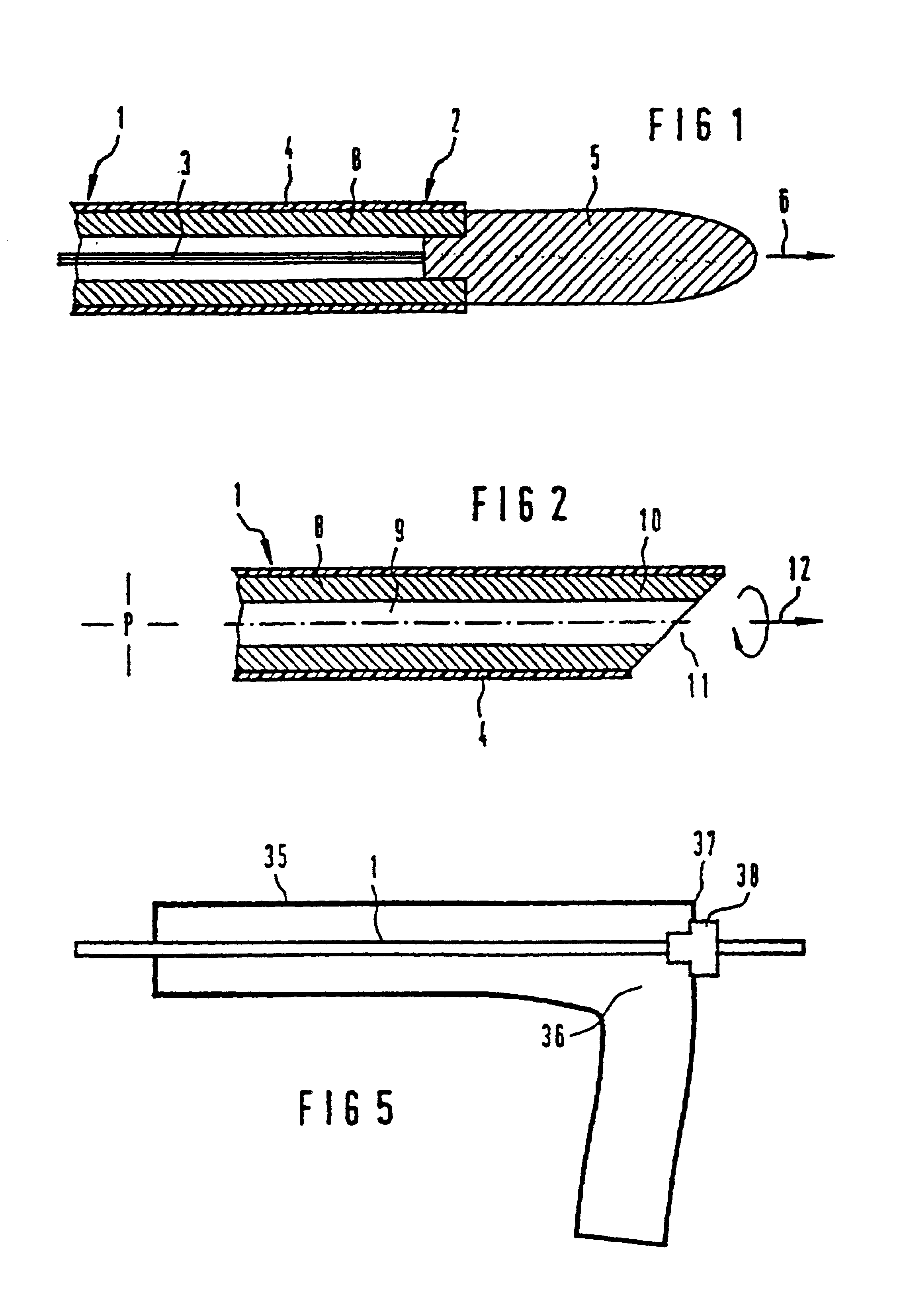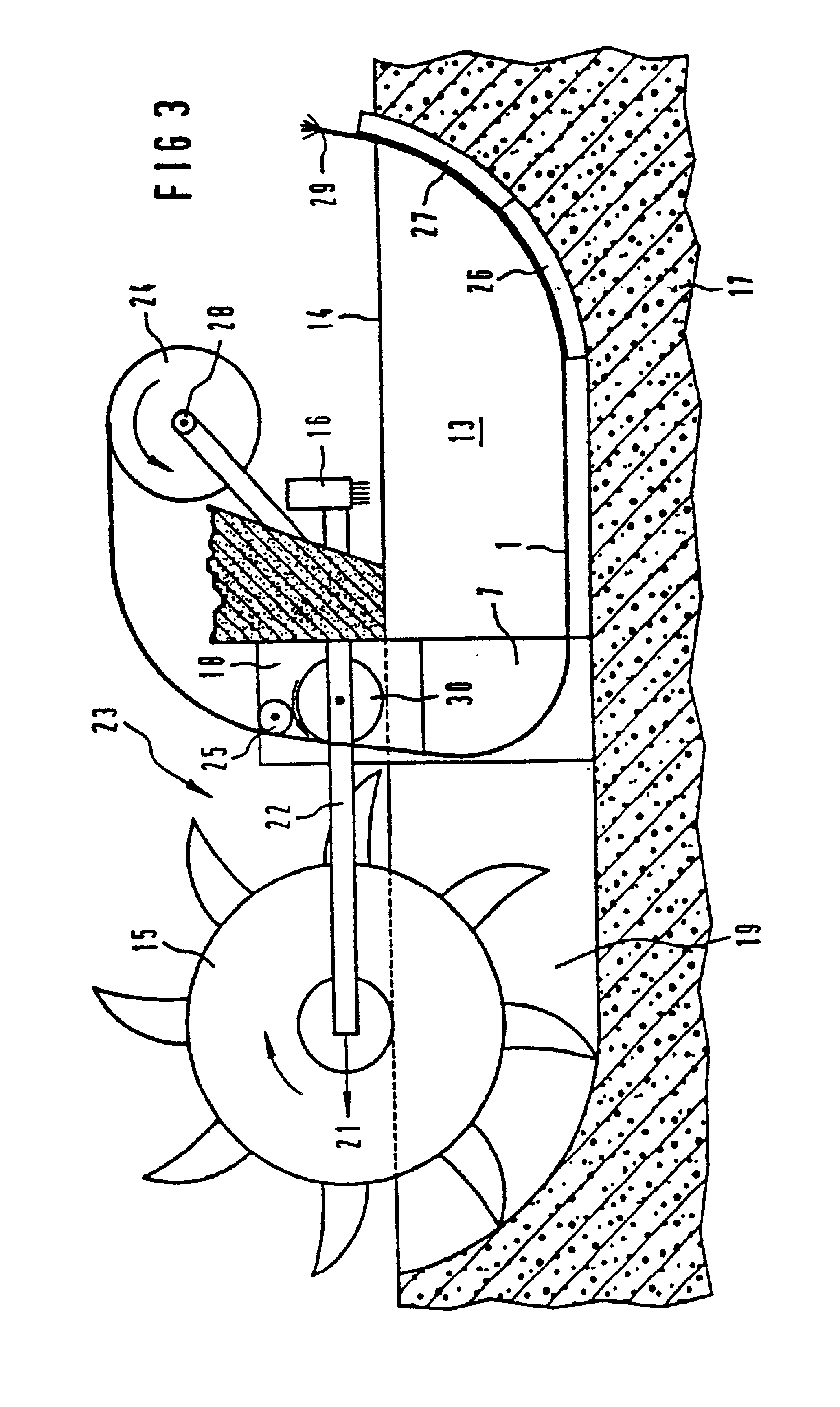Fiber optic installation
a fiber optic and installation technology, applied in the field of fiber optic installation, can solve the problems of disadvantageous laying machine and material outlay, and achieve the effects of reducing the overall line-laying cost, reducing the cost of laying method, and increasing operational reliability
- Summary
- Abstract
- Description
- Claims
- Application Information
AI Technical Summary
Benefits of technology
Problems solved by technology
Method used
Image
Examples
Embodiment Construction
FIG. 1 shows the construction of a tubular microcable or minicable 1, the cable end 2 being provided with a drawing-in or drilling tip 5. The arrow 6 indicates the drilling movement or advancement direction of the drilling head. Running in the interior of the minicable 1 are the optical waveguides 3, which may be introduced either at the factory or after the laying operation. The outer surface of the minicable is provided with a surface protection 4.
FIG. 2, then, shows the tube 8 of the minicable 1, in the interior of which, that is to say in the central duct of which, optical waveguides have not as yet been provided. In this case, the said central duct serves initially as a pressurized jetting duct for the laying operation. Thus, an appropriate medium, for example a suitable liquid, is injected under pressure, with the result that the earth is jetted out and displaced at the end 11 of the minicable. In addition, rotating movement of the drilling tip 10 in accordance with the arrow ...
PUM
 Login to View More
Login to View More Abstract
Description
Claims
Application Information
 Login to View More
Login to View More - R&D
- Intellectual Property
- Life Sciences
- Materials
- Tech Scout
- Unparalleled Data Quality
- Higher Quality Content
- 60% Fewer Hallucinations
Browse by: Latest US Patents, China's latest patents, Technical Efficacy Thesaurus, Application Domain, Technology Topic, Popular Technical Reports.
© 2025 PatSnap. All rights reserved.Legal|Privacy policy|Modern Slavery Act Transparency Statement|Sitemap|About US| Contact US: help@patsnap.com



